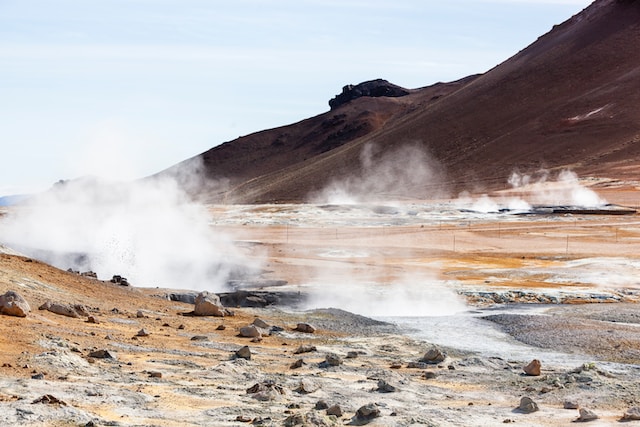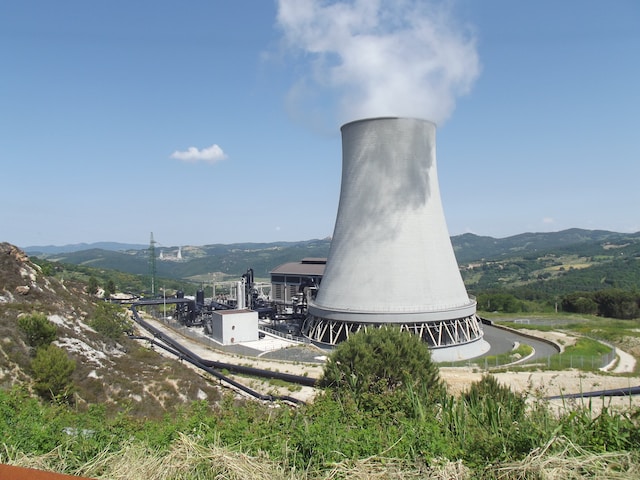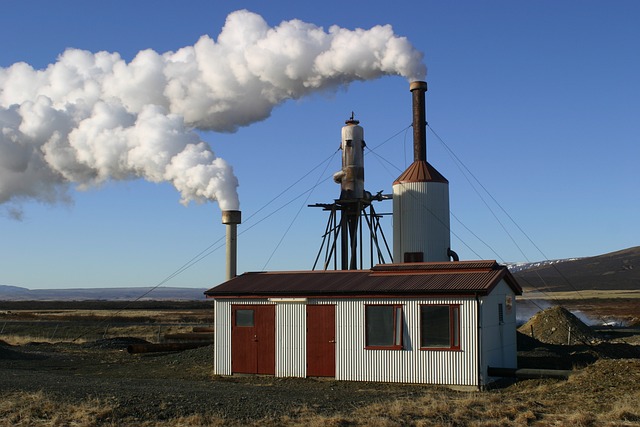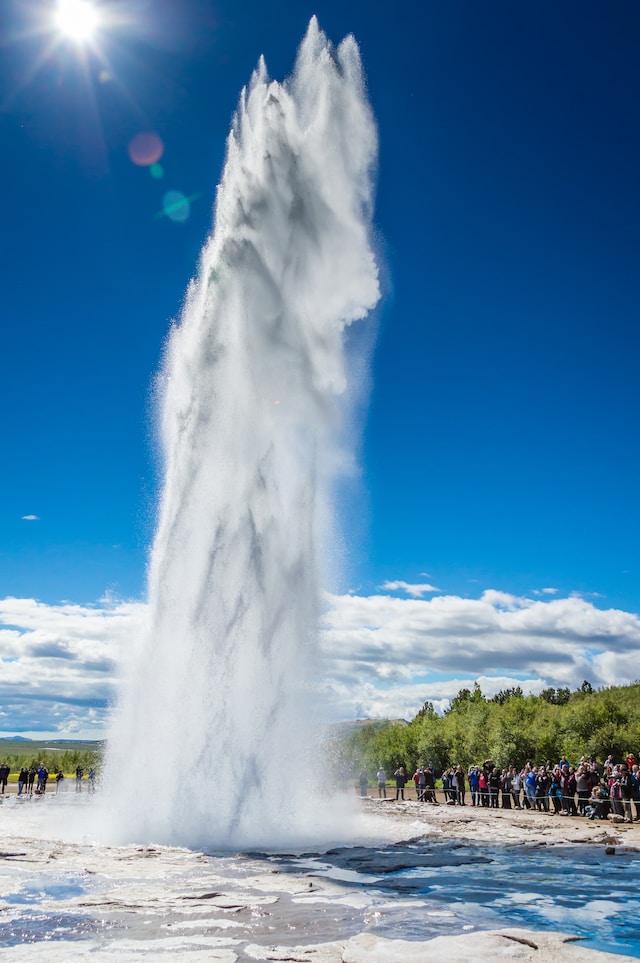
Climate change can be a real bummer. But geothermal power can help with climate change in a huge way.
Imagine a world where renewable energy sources are the norm, and our planet is not at risk of devastating climate change. Well, the good news is that we don’t have to imagine it anymore, thanks to geothermal power. This innovative technology harnesses the power of the Earth itself to create clean, renewable energy for the masses.
But how does it work, you may ask? Well, at its most basic level, geothermal power takes advantage of the Earth’s natural heat. Deep beneath the ground, the Earth’s crust is incredibly hot, and this heat can be used to create steam, which powers turbines and generates electricity. It’s a simple yet powerful concept that has the potential to revolutionize the energy industry.
The beauty of geothermal power is that it’s highly reliable and consistent, unlike other renewable energy sources such as solar or wind power. It doesn’t rely on sun or wind to function, instead tapping into a constant and abundant source of energy that is always available. Plus, geothermal power plants don’t require vast expanses of land, making them an ideal energy solution for urban areas.
Understanding Geothermal Power:
Geothermal energy is a fascinating and innovative technology that harnesses the Earth’s natural heat to generate clean and renewable energy. In this section, we will delve deeper into the workings of geothermal power, exploring its different components and how they contribute to this sustainable energy source.
Harnessing the Earth’s Heat
The core principle of geothermal power lies in the ability to tap into the Earth’s internal heat. This heat is accumulated from various sources, including the original formation of the Earth, radioactive decay, and residual heat from the planet’s formation. By accessing this vast reservoir of energy, we can power turbines and generate electricity.
Geothermal Power Plants
To harness the Earth’s heat, geothermal power plants are built in areas where hot reservoirs of water or steam can be accessed. These areas are typically regions with active volcanoes, geothermal hotspots, or sites near tectonic plate boundaries. Geothermal power plants consist of several key components:

Wells and Reservoirs:
Geothermal wells are drilled deep into the Earth’s crust, reaching the hot reservoirs beneath the surface. These wells allow for the extraction of steam or hot water, which serves as the primary energy carrier for geothermal power generation.
Turbines and Generators:
Once the steam or hot water is extracted, it is channeled through pipes and into turbines. The pressurized steam or water drives the blades of the turbines, causing them to rotate at high speeds. As the turbines spin, they transfer their mechanical energy to generators, which convert it into electrical energy.
Condensers and Heat Exchangers:
After passing through the turbines, the steam or hot water enters condensers, where it is cooled down and transformed back into water. This condensed water is then reinjected into the geothermal reservoirs to begin the cycle anew. Heat exchangers play a vital role in this process, efficiently transferring heat between different fluids to maximize energy conversion.
Environmental Benefits:
Geothermal power boasts numerous environmental advantages. Unlike fossil fuels, it emits minimal greenhouse gas emissions and virtually no air pollutants, contributing to cleaner air quality and reducing the negative impacts of climate change. Additionally, geothermal power plants have a small physical footprint, minimizing land disturbance compared to other energy sources such as coal or natural gas.
Geothermal Power’s Role in Reducing Greenhouse Gas Emissions
One of the most pressing challenges the world faces today is reducing greenhouse gas emissions to mitigate the impacts of climate change. Geothermal power offers a significant solution in this endeavor.

By harnessing the Earth’s natural heat, geothermal power plants can generate electricity without releasing substantial amounts of greenhouse gases, making them an essential player in the fight against climate change.
A Clean and Green Energy Source
Geothermal power is hailed as a clean and green energy source because it produces virtually no greenhouse gas emissions during its operation. Unlike fossil fuel-based power plants, which release large quantities of carbon dioxide and other pollutants into the atmosphere, geothermal power plants operate without burning any fuels. This means that we can generate electricity without contributing to the escalating levels of greenhouse gases responsible for global warming.
Eliminating the Need for Fossil Fuels
By embracing geothermal power, we can greatly reduce our dependency on fossil fuels, such as coal and natural gas, which are major contributors to greenhouse gas emissions. Traditional power plants rely on the combustion of these fossil fuels to generate electricity, releasing vast amounts of carbon dioxide into the atmosphere. Geothermal power plants, on the other hand, harness the Earth’s natural heat, eliminating the need for these highly polluting energy sources.
Mitigating Air Pollution
In addition to curbing greenhouse gas emissions, geothermal power also plays a vital role in reducing air pollution. Fossil fuel burning not only releases carbon dioxide but also emits harmful pollutants like sulfur dioxide, nitrogen oxides, and particulate matter. These pollutants can have severe consequences for air quality, human health, and the environment. Geothermal power plants, operating without combustion processes, produce clean electricity without releasing any of these dangerous pollutants, creating cleaner air and healthier living conditions for local communities.
A Renewable and Sustainable Solution
Geothermal power is a truly renewable and sustainable energy solution. The Earth’s heat is an inexhaustible resource, constantly replenished by planetary processes. Unlike finite fossil fuel reserves that will eventually run out, the Earth’s heat remains abundant and accessible for centuries to come. By tapping into this renewable energy source, we can establish a sustainable energy infrastructure that does not contribute to the depletion of natural resources.
Harnessing Geothermal Energy Worldwide
Geothermal energy presents a monumental opportunity for countries around the globe to transition to a sustainable and low-carbon future. In this section, we will explore how different nations are harnessing the power of geothermal energy, discussing their successes, challenges, and the potential benefits this renewable resource offers on a global scale.
Iceland: The Geothermal Pioneer
Known as the land of fire and ice, Iceland has pioneered the use of geothermal energy and serves as a shining example of its potential. The nation derives over 70% of its energy from geothermal sources, providing electricity and heat to its population. With its abundant geothermal reservoirs and forward-thinking policies, Iceland has successfully reduced its dependence on fossil fuels and significantly reduced greenhouse gas emissions.

United States: Unleashing Geothermal Potential
The United States, being rich in geothermal resources, has the potential to become a global leader in geothermal energy production. However, despite having vast untapped reserves, the country has yet to fully capitalize on this renewable source. Efforts are being made to expand geothermal power generation, primarily in states like California, Nevada, and Oregon, where high-temperature reservoirs exist. With the right investment and policy incentives, the U.S. could substantially increase its geothermal capacity, reducing its reliance on fossil fuels and decreasing emissions significantly.
Kenya: Geothermal Power in Africa
Kenya has emerged as a frontrunner in geothermal energy production in Africa. The country sits on the East African Rift System, making it an ideal location for harnessing geothermal power. Currently, geothermal energy accounts for approximately 30% of Kenya’s electricity generation, with ongoing investments and plans to expand capacity further. Through sustainable development and partnerships with international organizations, Kenya is unlocking its geothermal potential, providing clean and reliable energy to its citizens.
The Philippines: Geothermal Islands
Blessed with a unique geological setting, the Philippines is one of the world’s top producers of geothermal energy. The country’s numerous volcanic formations, hot springs, and geologically active landscapes make it a prime location for geothermal power plants. Geothermal energy accounts for a significant portion of the Philippines’ electricity mix, contributing to its renewable energy goals while reducing reliance on imported fossil fuels.
New Zealand: Māori Leadership in Geothermal Power
In New Zealand, the indigenous Māori people have embraced geothermal energy as a means to achieve energy independence while honoring their cultural and spiritual connection to the land. Geothermal power plants, owned and operated by Māori communities, provide sustainable electricity and heat to homes and businesses. These initiatives not only generate clean energy but also create economic opportunities and empower the Māori people as stewards of their ancestral lands.
Geothermal power has the potential to transform energy landscapes worldwide, providing a sustainable, clean, and reliable source of electricity and heat. As demonstrated by the examples above, countries such as Iceland, the United States, Kenya, the Philippines, and New Zealand are taking significant strides in harnessing geothermal energy. By investing in research, development, and supportive policies, nations around the globe can unlock the full potential of geothermal power, mitigating climate change, and fostering a more sustainable future for all.


